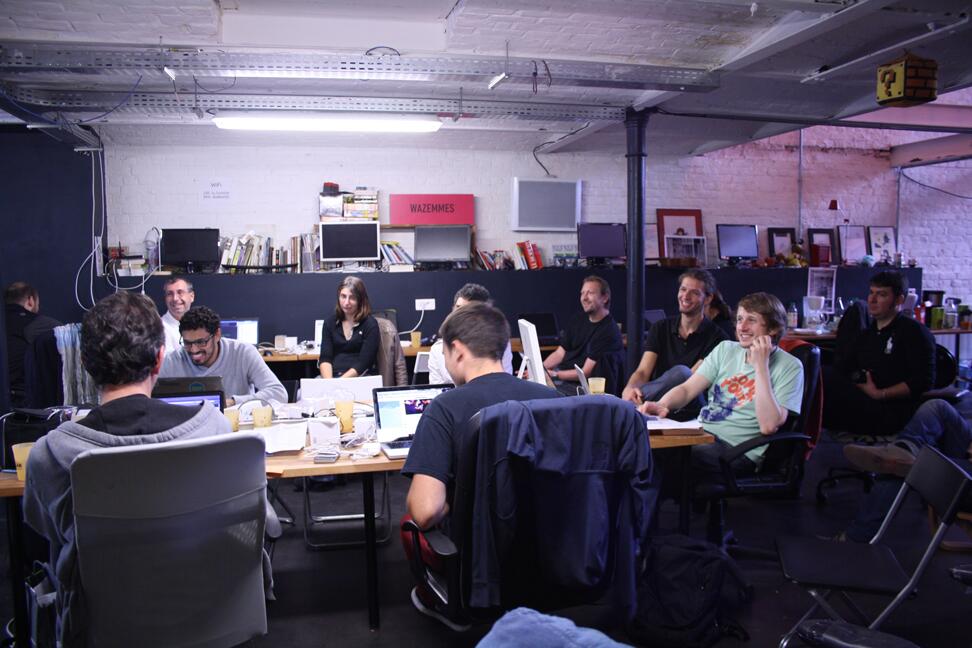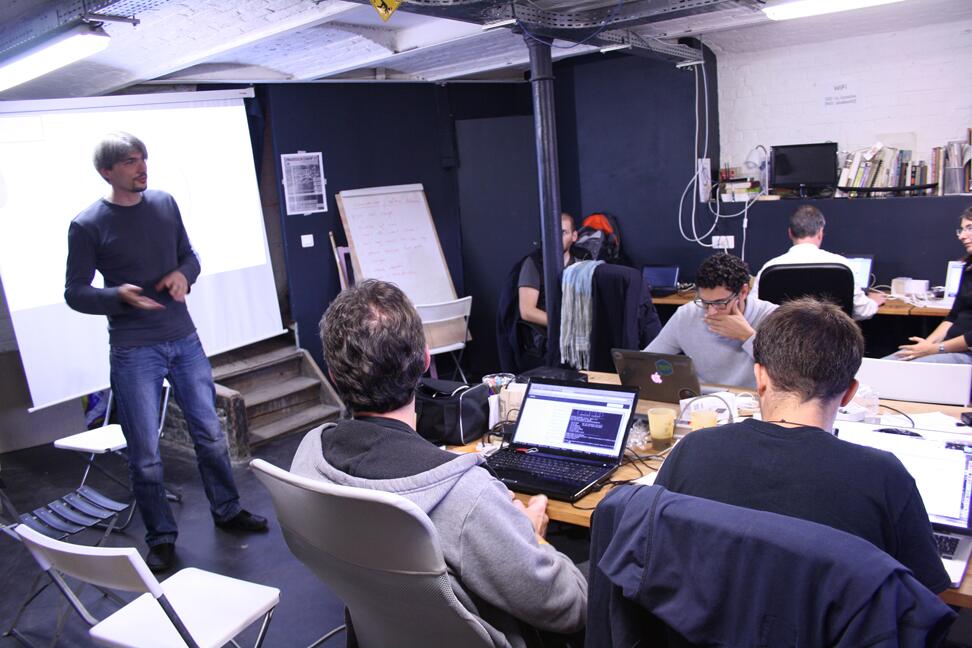(Hay una versión en Español aquí)
During the HackDay before the MIT-Knight Civic Media Conference I found out about the PirateBox project. The project uses a router/AP (for WiFi) and a USB drive to generate a wireless network. This network allows users to anonymously share files, chat and even collaborate in a Forum. Everything in this local network and without Internet.
The project is based on a OpenWRT (the linux distribution for embedded devices) and a web application where users can interact.
It is maintained by a group of developers and System Administrators from a variety of places and it has a very strong community in Europe. Version 1.0 has just been released and the installation is easier than ever. There is also a “spin-off” project called LibraryBox that did really well in KickStarter and even got founding from the Knight Prototype Fund.
PirateBox Camp Couple of weeks ago, the second PirateBox Camp took place in Lille (France). Thanks to it, I got the pleasure to meet an excellent group of people and even work with them. In only two days we hosted a quick install-fest, we played with some mesh networking, fixed some bugs, hacked the Arduino Yún and we even used a RaspberryPi for the Raspberry Pi(rate)Box and Volum.io.
It was fantastic to “humanize” some of the nicknames with who I only interact over the Internet (email and IRC). It was also great to find out more about the development process and the technical aspects of the project.
Journalism What is this has to do with Journalism? Not a while ago I wrote about KeyBlur, a project that we hacked during a HackDay. I believe that projects like PirateBox are an important alternative in countries that suffer from free speech attacks or where inhabitants are pursued for sharing information. Journalist that works in those kind of environments have to protect their sources, themselves and the integrity of the information shared. And that is the exactly spirit of KyeBlur.
I want my PirateBox Thanks to the big effort of the community, making a PirateBox is quite simple, you just need a router (TP-Link MR3020, TP-LINK WR703N or a TP-Link MR304), then you need to follow the steps here (this will be a link) and that’s it!
Some pictures:




Much more here!
